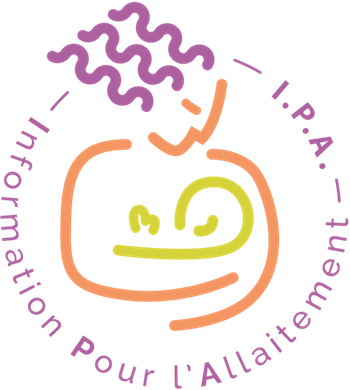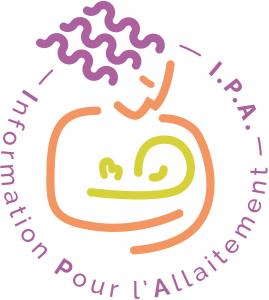Catégories
 > Techniques et méthodes > Epidémiologie > Etude de cas ou de cohorte > Techniques et méthodes > Epidémiologie > Etude de cas ou de cohorte
Etude de cas ou de cohorte |
Documents disponibles dans cette catégorie (59)
Article : texte imprimé
Stephen Stopenski, Auteur ; Anum Aslam, Auteur ; Xinmin Zhang, Auteur |Objective: To report breastfeeding complaints of women diagnosed with cancer during pregnancy and correlate success with characteristics of their treatment. Materials and Methods: This is a prospective cohort study of women diagnosed with can[...]texte imprimé
"Pourquoi choisir d’allaiter ? Comment cela fonctionne ? Quelles sont les bonnes positions ? Comment prévenir les difficultés ? Comment savoir que le bébé tète efficacement ? Quand et comment sevrer le bébé ? Comment gérer la reprise du travail [...]texte imprimé
"Ce précis de pratique clinique a été conçu pour assurer le soutien des professionnels qui accompagnent les familles souhaitant allaiter leur enfant. Le groupe d'auteurs (pédiatre, gynécologue, nutritionniste, pharmacien, puéricultrices, sages-f[...]Article : texte imprimé
Kenneth Herrmann, Auteur ; Katherine Carroll, Auteur |Objective: This study tested the hypothesis that feeding an exclusively human milk (EHM) diet to premature infants reduces the incidence of necrotizing enterocolitis (NEC) associated with enteral feeding. Study Design: An observational study [...]Article : texte imprimé
Hannah G. Juncker, Auteur ; Michelle Romijn, Auteur ; Veerle N. Loth, Auteur |Background It has been demonstrated that human milk from mothers who have been infected with severe acute respiratory syndrome coronavirus 2 (SARS-CoV-2) contains antibodies against the virus, which could play an important role in protecting th[...]Nouveauté
Article : texte imprimé
Erin Fleurant, Auteur ; Michael Schoeny, Auteur ; Rebecca Hoban, Auteur |Background: While black mothers initiate human milk (HM) provision at lower rates than non-black mothers in the United States, some neonatal intensive care units (NICUs) report similar initiation rates regardless of race/ethnicity for mothers of[...]Article : texte imprimé
Iva Burinova, Auteur ; Katarina Kulihova, Auteur ; Veronika Vitkova, Auteur |Background: Goals of treatment of orofacial cleft are to improve feeding, speech, hearing, and facial appearance. Early surgery brings faster healing, better cosmetic effect, and fewer complications. Breastfeeding rates after early surgery are [...]Article : texte imprimé
Heide S. Temples, Auteur ; Deborah Willoughby, Auteur ; Bonnie Holaday, Auteur |Background: The prevalence of overweight infants and toddlers has increased by 60% in the past 30 years and is a significant contributor to diabetes, cardiovascular disease, and early morbidity and mortality. The World Health Organization’s upd[...]Article : texte imprimé
Aza Sherin Mohamad Yusuff, Auteur ; Li Tang, Auteur ; Colin W. Binns, Auteur |Background: Postnatal depression is a disorder that can lead to serious consequences for both the mother and infant. Despite the extensively documented health benefits of breastfeeding, its association with postnatal depression remains uncertai[...]Article : texte imprimé
The women who volunteer as breastfeeding counsellors with the Australian Breastfeeding Association may reasonably be supposed to have achieved a satisfying breastfeeding relationship. Many have had difficulties with breastfeeding, but they have [...]Article : texte imprimé
Elizabeth McGuire, Auteur ; Heather Miller, Auteur |Breastfeeding is the normal way of feeding human infants and the World Health Organization recommends infants be breastfed exclusively to 6 months with ongoing breastfeeding to 2 years and beyond. Sometimes young children must be hospitalised an[...]Article : texte imprimé
Leandro Cordero, Auteur ; Reena Oza-Franck, Auteur ; Mark B. Landon, Auteur |Background: Women who are overweight or obese are at risk for maternal and neonatal medical complications, including macrosomia (birth weight ≥4,000 g), that may contribute to breastfeeding initiation failure. This study examined fac[...]Article : texte imprimé
Nicole Yonke, Auteur ; Rebekah Maston, Auteur |Background: Women taking methadone or buprenorphine are encouraged to breastfeed if stable without polysubstance use. Research Aim: We aimed to determine the difference between stated intention to breastfeed prenatally in women taking metha[...]Article : texte imprimé
Sarah A. Keim, Auteur ; Kelly A. McNamara, Auteur ; Chelsea E. Dillon, Auteur |Background: Feeding infants unscreened, raw human milk from a source other than the mother may pose health risks. The objectives of the Moms2Moms Study were to estimate the proportions of mothers who were aware of breastmilk sharing, considered [...]texte imprimé
"Cet ouvrage a été construit à partir d'une double expérience : d'une part, l'accompagnement de familles engagées dans l'allaitement de leur(s) enfant(s), d'autre part, la formation de professionnels de santé et de consultants en lactation à l'a[...]texte imprimé
Après une étude théorique permettant de mieux appréhender les différents phénomènes et événements en lien avec l'allaitement, nous pourrons aborder le vécu de jeunes mères à ce propos. Vécu empreint de questionnements, de culpabilité, de désir e[...]Article : texte imprimé
Tina Herscovici, Auteur ; Paul Merlob, Auteur ; Bracha Stahl, Auteur |Objective: This study evaluated the outcome of infants exposed to colchicine during lactation. Subjects and Methods: A prospective observational cohort study design was used. Mothers who contacted Beilinson Teratology Information Service (BEL[...]Article : texte imprimé
Jamie W. Krashin, Auteur ; Clara Lemani, Auteur ; Jerome Nkambule, Auteur |Objective: This study compares breastfeeding outcomes after immediate postpartum initiation of single-rod etonogestrel (ENG) versus two-rod levonorgestrel (LNG) contraceptive implants. Outcomes assessed include the following: (1) breastfeeding c[...]Article : texte imprimé
Irena Zakarija-Grkovic, Auteur ; Marija Boban, Auteur ; Suncana Jankovic, Auteur |Background: The primary goal of the Baby-Friendly Hospital Initiative (BFHI) is to create conditions in maternity facilities that enable women to initiate and sustain the practice of breastfeeding exclusively. Research aim: This study aimed[...]Article : texte imprimé
Case reports are important contributions to the literature within the health sciences, predominately medicine and nursing; whereas case studies are more usual in the applied social sciences (e.g., social work, psychology). There are distinctly d[...]Article : texte imprimé
Christine B. Mirzaian, Auteur ; Douglas L. Vanderbilt, Auteur ; Mary Rose Mamey, Auteur |Introduction: Survivors of twin gestations that are complicated by twin-twin transfusion syndrome (TTTS) are at high risk for neurodevelopmental morbidities and there is little known about the benefits of breastmilk in this population. Aim: [...]Article : texte imprimé
Emma L Connolly, Auteur ; Misty Reinkowsky, Auteur ; Roslyn Giglia, Auteur |The Baby Friendly Health Initiative (BFHI) aims to improve breastfeeding initiation and continuation. Teaching antenatal colostrum expression (ACE) may also promote positive breastfeeding outcomes. However, there is concern that this may impact [...]Article : texte imprimé
Marie Tarrant, Auteur ; Kris Y.W Lok, Auteur ; Daniel Y.T. Fong, Auteur |Background: The Baby-Friendly Hospital Initiative requires hospitals to pay market price for infant formula. No studies have specifically examined the effect of hospitals paying for infant formula on breastfeeding mothers’ exposure to Baby-Frie[...]Article : texte imprimé
Gemma Ginovart, Auteur ; Ignasi Gich, Auteur ; Sergio Verd, Auteur |Background: Successful strategies to prevent neonatal acute kidney injury are lacking. Nevertheless, it is well known that in breastfed babies the excretory needs of the kidney are low because the intake of most nutrients is just above the nutr[...]Article : texte imprimé
Phung Thi Hoang Nguyen, Auteur ; Colin W. Binns, Auteur ; Cong Luat Nguyen, Auteur |Background: Gestational diabetes mellitus (GDM) and its complications are major concerns because of the negative effects of GDM during antenatal period and on the future health of mothers and infants. Breastfeeding is beneficial for GDM mothers [...]Article : texte imprimé
Amanjot Sandhu, Auteur ; Sharla Fast, Auteur ; Kari Bonnar, Auteur ; Ronald John Baier, Auteur ; Michael Narvey, Auteur |Objective: To describe the results of utilizing a human milk-based human milk fortifier (HMHMF) as rescue therapy to meet nutritional requirements in very low birth weight and preterm infants demonstrating feeding intolerance to bovine-based hum[...]Article : texte imprimé
Margaret G.K. Parker, Auteur ; Laura Burnham, Auteur ; Wenyang Mao, Auteur |Background: It is unclear whether use of donor milk (DM) changes the provision of mothers’ own milk (MOM) to very low birth weight (VLBW) infants in the neonatal intensive care unit (NICU). Objectives: To determine whether (1) the rates of [...]Article : texte imprimé
Mary Sharp, Auteur ; Catherine Campbell, Auteur ; Debbie Chiffings, Auteur |Introduction: The extensive health benefits of breastfeeding preterm infants for both mother and infant have been widely reported. However, establishing and maintaining breastfeeding for very preterm (VP) infants remain challenging. The aim of t[...]Article : texte imprimé
Marija Boban, Auteur ; Irena Zakarija-Grkovic, Auteur |Introduction: In-hospital formula supplementation is a common practice and has been shown to be a strong determinant of shorter exclusive and any breastfeeding. Objective: To investigate the reasons for and circumstances in which in-hospital [...]Article : texte imprimé
Mahnaz Zarshenas, Auteur ; Yun Zhao, Auteur ; Shahnaz Poorarian, Auteur |Background: Approximately one in five Western women who breastfeed are likely to experience acute mastitis. This study investigated the incidence and risk factors of acute mastitis in a cohort of Iranian women. Subjects and Methods: Subjects [...]Article : texte imprimé
Farhadi Roya, Auteur ; Philip Roy K., Auteur |One of the important challenges in surrogate pregnancies is the early bonding of genetic mother with her infant and the establishment of breastfeeding. A combination of pharmacological and nonpharmacological methods is often used for the inducti[...]Article : texte imprimé
Meghan B. Azad, Auteur |The increasing prevalence of chronic diseases, such as allergies, asthma, and obesity, may be linked to early life exposures and experiences during critical periods of prenatal and early postnatal development. The CHILD study is a prospective lo[...]Article : texte imprimé
Miguel A. Marín Gabriel, Auteur ; Ibone Olza Fernández, Auteur ; Ana M. Malalana Martínez, Auteur |Aim: Several synthetic peptide manipulations during the time surrounding birth can alter the specific neurohormonal status in the newborn brain. This study is aimed at assessing whether intrapartum oxytocin administration has any effect on primi[...]Article : texte imprimé
Elizabeth McGuire, Auteur |In 2004, in response to evidence of a re-emergence of iodine deficiency in Australia, a National Iodine Nutrition Survey was conducted. The survey found that while Western Australia and Queensland were iodine sufficient, South Australia was bord[...]Article : texte imprimé
Is Breastfeeding Protective for Blood Pressure in Schoolchildren? A Cohort Study in Northeast Brazil
Rosemary de Jesus Machado Amorim, Auteur ; Alexsandra Ferreira da Costa Coelho, Auteur ; Pedro Israel Cabral de Lira, Auteur |Objective: This study assessed the influence of breastfeeding and nutritional status of full-term infants on blood pressure at school age. Subjects and Methods: This was a cross-sectional study nested in a cohort of 375 infants recruited at b[...]Article : texte imprimé
It's Not Yeast: Retrospective Cohort Study of Lactating Women with Persistent Nipple and Breast Pain
Ryan Colton Betts, Auteur ; Helene M Johnson, Auteur ; Eglash Anne, Auteur |Introduction: Health care providers treating lactating women for nipple and breast pain often attribute symptoms to Candida albicans infection. However, multiple other conditions may present with pain, erythema, and pruritis. We explored the exp[...]Article : texte imprimé
Paola Agnese Mauri, Auteur ; Marta Soldi, Auteur ; Ivan Cortinovis, Auteur |The aim of this study is to identify some characteristics of women who, before having delivered their babies, decide not to breastfeed. To date there are no Italian studies trying to understand characteristics and reasons of mothers who do not w[...]Article : texte imprimé
Donna J. Chapman, Auteur ; Joan Esper Kuhnly, Auteur |Background Several lactation assessment tools are available for in-hospital assessment of breastfeeding dyads, and their components vary widely. To date, no research has evaluated the perceptions of registered nurses (RNs) regarding the limitat[...]Article : texte imprimé
Elisabeth B. Froh, Auteur ; Jessica Schwarz, Auteur ; Diane L. Spatz, Auteur |Introduction: MamaCare is an adaptation of the CenteringPregnancy group prenatal care model designed to support women when the pregnancy has been complicated by the presence of known congenital anomalies. The lactation-related outcomes of partic[...]Article : texte imprimé
Alison M. Stuebe, Auteur ; Samantha Maltzer-Brody, Auteur ; Brenda Pearson, Auteur |Background: Low milk supply is a common cause of early weaning, and supply issues are associated with dysregulation of thyroid function and prolactin. However, hormone levels compatible with successful breastfeeding are not well defined, limitin[...]Article : texte imprimé
Ann M. Witt, Auteur ; Maya Bolman, Auteur ; Sheila Kredit, Auteur |Background: Breast engorgement is a major cause of pain and weaning in the early postpartum period. While protocols reinforce the need for anticipatory engorgement advice and continued outpatient health professional breastfeeding support, there [...]Article : texte imprimé
Diane DiTomasso, Auteur ; Andrea L. Paiva, Auteur |Background: Weight changes in the early weeks of life are important indicators of newborn wellness. Yet, little is known about weight loss patterns for breastfeeding newborns. Research aim: This study aimed to compare weight changes and exc[...]Article : texte imprimé
Amanda Rahman, Auteur ; Jordan S. Kase, Auteur ; Yuanyi L. Murray, Auteur ; Boriana Parvez, Auteur |Background: An exclusive human milk (EHM) diet in extremely low birth weight (ELBW) infants (birth weight ≤1,000 g) is linked to an increased likelihood of extrauterine growth restriction (EUGR, weightArticle : texte imprimé
Malnutrition continues to be a major public health problem in developing countries, and young childrenArticle : texte imprimé
Jill Radtke Demirci, Auteur ; Susan M. Sereika, Auteur ; Debra Bogen, Auteur |Background: Although late preterm infants (LPIs), at 340/7–366/7 weeks of gestation, are reported to have suboptimal rates of breastfeeding, there is a lack of quantitative evidence describing this trend. This study examined the prevalence of br[...]Article : texte imprimé
Objective: The prevalence of a lingual frenulum in newborn infants is reportedly 0.3–12%. The purpose of this study was to describe the prevalence of a lingual frenulum based on the Coryllos classification in nonselected newborn infants after de[...]texte imprimé
Jack Newman, Auteur ; Teresa Pitman, Auteur ; Violaine Bideaux-Petit, Traducteur | Villiers-sur-Marne : Éd. du Hêtre | Blanche sève | 2010"Pourquoi la plupart des mères finissent-elles par sevrer leur bébé alors qu'il n a que quelques jours ou quelques semaines ? Comment aider les mères à faire de l'allaitement une expérience réussie ? En quoi le peau-à-peau est-il bénéfique pour [...]Article : texte imprimé
Emily Freney, Auteur ; Donna Johnson, Auteur ; Isabella Knox, Auteur |Background: Hospital breastfeeding support practices can affect breastfeeding outcomes. Learning collaboratives are an increasingly common strategy to improve practices in health care and have been applied to breastfeeding in many cases. Obj[...]Article : texte imprimé
Malamo E. Contouris, Auteur ; Jill R. Demirci, Auteur ; Arun Jeyabalan, Auteur ; Janet M. Catov, Auteur ; Eleanor B. Schwarz, Auteur |Background: Women with hypertensive disorders of pregnancy are at increased risk of cardiovascular disease in later life. We sought to determine the association between lactation and markers of maternal cardiovascular health among postpartum wom[...]Article : texte imprimé
Faruk Uguz, Auteur ; Nazile Arpaci, Auteur |Objective: Primary pharmacological agents for depression and anxiety disorders are antidepressants, especially selective serotonine reuptake inhibitors. The aim of this study was to examine the features and prevalence of adverse effects of parox[...]Article : texte imprimé
Kristin Horsley, Auteur ; Lynette Cusack, Auteur |Background: Exclusive breastfeeding is recommended for the first 6 months of life and has significant benefits for both mother and child. Pregnancy-specific anxiety is a distinct and definable syndrome that has been identified as a robust predi[...]Article : texte imprimé
Katherine Carroll, Auteur ; Kenneth R. Herrmann, Auteur |Objectives: Donor human milk (DHM) is increasingly being used in neonatal intensive care units (NICUs) to achieve exclusive human milk (EHM) feedings in preterm infants. The aim of the study was to determine the cost of DHM to achieve EHM feedin[...]Article : document cartographique imprimé
"Background: This case study of donor human milk banking and the ethics that govern interested parties is the first time the ethics of donor milk banking has been explored. Methods and Results: Two different models of ethics and their direct im[...]Article : texte imprimé
Ruth A. Lawrence, Auteur |Nipple pain is not new and was eloquently reported in 1952 by Niles Newton.3 Nipple pain has been reported increasingly in this decade by mothers as intense and persistent pain lasting weeks, not days. Pain is second only to perceived low milk s[...]Article : texte imprimé
Jane A. Scott, Auteur ; Manal Dashti, Auteur ; Mona Al-Sughayer, Auteur |Background: The early introduction of complementary foods is common in Middle Eastern countries but little is known about the determinants of this practice in this region. Objectives: This prospective cohort study conducted from October 200[...]Article : texte imprimé
Victoria Bellinger, Auteur ; Donna Solari, Auteur ; Monica Hogan, Auteur |There is currently very little data available that describe the medium-term breastfeeding outcomes of mother/baby dyads who have previously had tongue-tie (TT) division in the neonatal period. As well the effects seen on introducing solids, spee[...]Article : texte imprimé
Laura R. Kair, Auteur ; Tarah T. Colaizy, Auteur |Background: Maternal overweight and obesity are associated with decreased breastfeeding duration. Objective: This study aimed to identify barriers to breastfeeding continuation among overweight and obese mothers. Methods: A retrospectiv[...]Article : texte imprimé
Leanne Sheeran, Auteur ; Kerrie Buchanan, Auteur ; Anthony Welch, Auteur |Aim: This research explores women's experiences of learning to breastfeed. Design: A purposive cohort of healthy mothers participated in individual audio recorded interviews late pregnancy and then 2 and 8 weeks after birth. All interviews w[...]





























































